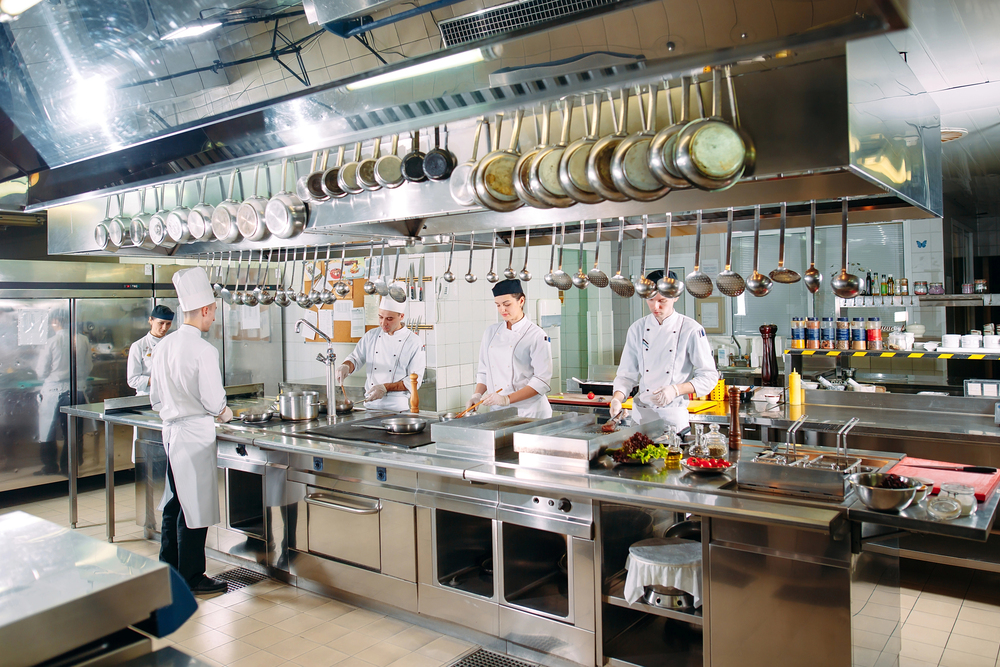 22
Oct
22
Oct
Understanding Commercial Kitchen Fire Suppression System
- 0 Comment(s)
- October 22, 2024
Fire safety in a commercial kitchen is not a luxury—it’s a necessity. With the high use of cooking oils, open flames, and high-heat equipment, commercial kitchens are particularly vulnerable to fire risks. Installing a commercial kitchen fire suppression system is one of the most effective ways to mitigate these risks and protect both your staff and your property.
This article will explain how these systems work, the components involved, and why regular maintenance is crucial to ensuring your kitchen stays fire-safe.
Why Fire Suppression Systems Are Crucial for Commercial Kitchens
In environments where grease, oils, and high heat are constantly present, fires can start in seconds. A commercial kitchen fire suppression system provides an automatic response that can control and extinguish fires quickly, even before the staff is aware of the danger. These systems are designed specifically to target the types of fires that commonly occur in kitchens, especially grease fires that cannot be extinguished by water or traditional fire extinguishers.
Unlike in residential homes, where fire risks are lower and more easily managed, commercial kitchens face more significant hazards. From restaurants to food trucks, every kitchen with a Type 1 hood that handles greasy vapors must have a fire suppression system in place. Having this system not only keeps your employees and customers safe, but it also ensures compliance with local fire codes and insurance requirements.
Key Components of a Commercial Kitchen Fire Suppression System
Every commercial kitchen fire suppression system is made up of several essential components designed to respond quickly and efficiently in the event of a fire. While different systems may vary slightly depending on the manufacturer, most include:
● The Hood and Gas Line Connections
One of the primary connections in any fire suppression system is to the hood installed above your cooking equipment. This hood is critical in both capturing grease vapors and removing smoke from the kitchen. The second essential connection is to the gas line. When a fire is detected, the system automatically shuts off the gas supply, eliminating one of the key fuel sources for the fire.
Together, these connections work to both prevent the fire from spreading and reduce the risk of explosion, which is a serious concern in kitchens using gas stoves or ovens.
● Nozzles and Wet Chemical Suppressant
Nozzles installed in the kitchen hood and above the cooking surfaces are responsible for discharging the wet chemical suppressant. This chemical is specially formulated to tackle grease fires. When the nozzles are activated, they spray the suppressant directly onto the cooking equipment, immediately cooling down the flames and preventing them from reigniting.
● The Role of the Kitchen Hood
The kitchen hood not only helps to remove smoke from the air, but it also plays a crucial role in ensuring the effectiveness of the fire suppression system. Once the system is activated, the hood works to pull smoke, heat, and airborne grease particles out of the kitchen. This helps keep the air clear and ensures that staff can respond quickly and safely.
However, it’s important to remember that the kitchen hood needs regular cleaning and maintenance. Over time, grease and oils can build up inside the hood, which could cause the fire suppression system to underperform during an emergency.
How Fire Suppression Systems Work in a Fire Emergency
When a fire breaks out in a commercial kitchen, time is of the essence. Fires in these settings can spread quickly due to the presence of oils, grease, and other flammable materials. Here’s how a commercial kitchen fire suppression system responds to a fire:
- Automatic Activation: Modern fire suppression systems are typically designed to activate automatically when they detect a certain level of heat. Sensors within the system monitor the kitchen environment and, when they sense a fire, the system is triggered without any human intervention.
- Shutting Off Fuel Sources: The system immediately shuts off the gas and electrical lines to the kitchen equipment, cutting off the fire’s fuel source and minimizing the potential for further damage.
- Discharge of Wet Chemical Suppressant: The nozzles installed in the hood then discharge the wet chemical suppressant. This special liquid is designed to cool the fire and prevent it from reigniting. The wet chemical forms a soapy film over the grease or oil, separating it from oxygen and thereby suppressing the flames.
This process can occur in seconds, which is critical in preventing the fire from spreading to other areas of the kitchen. For small businesses, such quick action can make the difference between a minor incident and a total shutdown due to fire damage.
Importance of Regular Maintenance and Inspections
Even the most advanced fire suppression systems require regular inspections and maintenance to ensure they perform when needed. Local fire codes and insurance requirements typically mandate that commercial kitchens have their fire suppression systems inspected every six months. This is where reliable fire extinguisher services play a crucial role. A properly maintained system not only complies with legal standards but also offers peace of mind that your kitchen is safe.
During an inspection, trained technicians will check the system’s connections, nozzles, and chemical levels to ensure everything is in working order. Any issues, such as low suppressant levels or blocked nozzles, are addressed immediately to maintain the system’s readiness.
Additionally, after any changes to the cooking line, such as adding new equipment, it’s important to have the fire suppression system inspected. Adjustments may be needed to ensure that the new setup is fully protected. Without these routine inspections and adjustments, small issues could compromise the system’s ability to function properly during an emergency.
The Importance of Manual Pull Stations
While automatic activation is a key feature of most fire suppression systems, manual pull stations provide an additional layer of safety in commercial kitchens. Fires, especially grease fires, are unpredictable and can spread rapidly if not dealt with immediately. In some cases, the fire suppression system’s sensors may not activate until the fire has already grown. A manual pull station allows staff to manually trigger the system at the first sign of fire, giving them the control to prevent the fire from spreading beyond the cooking surface.
Manual pull stations are typically installed in easily accessible areas, away from the immediate danger zone, but close enough to reach in an emergency. They act as a safeguard, ensuring that the system can be engaged even if the automatic sensors are delayed. This level of manual control is invaluable, especially in high-risk environments like commercial kitchens, where every second counts.
Who Needs a Commercial Kitchen Fire Suppression System?
Any kitchen with a cooking surface, regardless of the type of establishment, should have a commercial kitchen fire suppression system. This includes traditional sit-down restaurants, fast-food chains, hospital kitchens, and even seasonal kitchens at event stadiums. Essentially, any kitchen that deals with the high heat, oils, and grease associated with commercial cooking requires this level of protection.
Small businesses, such as local diners and food trucks, often overlook the importance of these systems due to perceived costs or space limitations. However, the risks are just as high in smaller operations. Fires can quickly spread through confined spaces, making a fire suppression system even more essential. By having a well-maintained system in place, small business owners can prevent minor fires from becoming catastrophic, saving their property, staff, and livelihood.
Maintaining Your Fire Suppression System
Maintaining a fire suppression system is as important as installing it. The system needs to be functional at all times, which requires regular inspections and servicing. According to fire safety regulations, commercial kitchens must have their systems inspected every six months to ensure they are working properly. This includes checking the nozzles, gas line connections, and the wet chemical levels to ensure they are ready to respond in the event of a fire.
Beyond the fire suppression system itself, it’s critical to maintain other related systems, such as the kitchen hood. Over time, grease and oil can build up inside the hood, creating a fire hazard. Even if the fire suppression system is in perfect working order, a dirty kitchen hood can fuel a fire and make it harder to extinguish. Cleaning schedules should be based on the kitchen’s usage:
- Monthly cleaning for 24-hour kitchens and high-volume restaurants.
- Quarterly cleaning for average-volume kitchens.
- Semi-annual cleaning for sit-down restaurants or those with lower cooking volumes.
- Annual cleaning for seasonal or infrequent-use kitchens.
Maintaining your fire suppression system, as well as cleaning your kitchen hood, are both essential steps in creating a safe kitchen environment.
Yadkin Fire & Safety: Keeping Your Kitchen Safe
We understand the specific challenges that come with maintaining fire safety in commercial kitchens. Our team of experienced professionals at Yadkin Fire & Safety is committed to not only providing fast service and competitive pricing but also ensuring that our clients are educated about fire safety.
We offer quick response times for service requests, so your kitchen remains compliant and safe from the very start. From regular maintenance to expert guidance, we help protect your business, staff, and customers from fire hazards.

